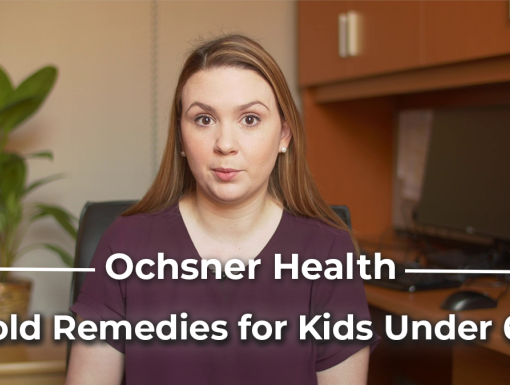
Can a Cold Cause a Fever?
You start to notice you feel slightly run-down and sluggish and maybe you have other symptoms like a runny nose or sore throat, so you decide to take your temperature. It reads that you have a fever, which is a temperature of 100.4 degrees Fahrenheit or greater. Could this mean you have a common cold or is it something else?
What is the common cold?
The common cold is a viral infection of your nose and throat. While it may cause you to feel sluggish and slightly run-down, it often isn’t anything to worry about.
Symptoms of the common cold
A fever can be a symptom of many different sicknesses, including the common cold. However, while people with a cold can develop a fever, it tends to be one of the less common symptoms.
Some of the more typical symptoms of the common cold are:
- Runny or stuffy nose
- Congestion
- Postnasal drip or drainage in the back of your throat
- Chills
- Cough
- Watery eyes
- Sneezing
- Fatigue
Discharge from your nose may become thicker and change in color as the cold runs its course.
When do people typically get a cold?
Colds may occur any time of the year but are more common in the fall and winter months. Healthy adults can expect to have a cold at least once a year. Children younger than 6 are at greater risk of catching a cold, especially if they are in a daycare setting. Most people will recover from their cold in a week, but symptoms may last longer. Symptoms usually appear in one to three days after exposure to the virus.
What other illnesses cause fever?
A normal body temperature can range anywhere between 97 to 99 degrees Fahrenheit. When your body temperature goes above this, you are considered to have a fever. You may develop a fever for many reasons, including:
- Viruses, like the common cold (though not a typical symptom), the flu, COVID-19, among many others. If you think you have the flu or COVID-19, talk with your provider. Testing will most likely be needed. Get your vaccine for the flu and COVID-19 to better protect yourself.
- Bacterial infections
- Heat exhaustion
- Cancerous tumors
- Medications, like antibiotics or drugs used to treat high blood pressure, may cause a fever
- Certain vaccinations can cause a low-grade fever. This type of fever is a sign of an immune response to the vaccine and are expected in some patients. The symptoms may last for a few hours or a day or two.
If the fever is not attributed to any of the above, your doctor may need to run additional tests to determine the cause.
How to treat the common cold
There are many treatments and remedies to relieve the symptoms of a cold. The most common over-the-counter medicines used for colds include decongestants, antihistamines and pain relievers. Be sure to read the label before taking any medications. The Food and Drug Administration doesn’t recommend children under the age of 4 take over-the-counter cold medicines.
The most effective home remedies for colds include gargling saltwater, resting and staying hydrated. A warm bath may also help to reduce a fever and ease the aches associated with a cold. If your symptoms get worse, be sure to talk with your doctor to see what further treatment is needed.
How to protect yourself from the common cold
- Avoid close contact with people who are sick
- Wear a mask in public settings to help protect yourself and others by slowing the spread of the cold and other viruses.
- Avoid touching your eyes, nose and mouth
- Cough or sneeze into a tissue then throw the tissue into the trash
- Wash your hands frequently with soap and water for at least 20 seconds
- Stay home when you are sick
- Clean and disinfect frequently touched objects in your home and workplace
Ochsner Anywhere Care virtual visits offer immediate access to a healthcare provider from your smartphone, tablet or computer. Learn more.



